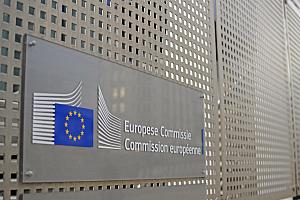Romania’s GDP slows down in Q1, flash estimate shows

Romania’s economy edged up by only 0.1% q/q in the first quarter of the year after the sustained 1% advances in each of the previous two quarters, according to the flash estimate published by the statistics office INS.
The annual economic growth consequently eased to 2.3% y/y from 4.5% y/y in Q4 last year.
Both the quarterly and annual growth rates marked Romania’s weakest performance since 2016 – except for the slowdown during the lockdown period in 2020. Since 2016, Romania’s economy has advanced by an average quarterly growth rate of 0.9%.
The main suspect for the sudden slowdown in Q1 is gross fixed capital formation, as private consumption demonstrated resilience and the negative external balance has narrowed. At the same time, the buoyant retail sales in Q1 may not accurately reflect private consumption’s dynamics, broadly seen as more cautious.
The government drafted the 2023 budget on assumptions of 2.8% growth, and the European Commission recently revised upward its forecast for this year to 3.2%.
The question now is whether the largely unexpected slowdown in Q1 puts at risk more optimistic full-year estimates (such as EC’s Spring Forecast) or indicates weaknesses played down by analysts. Part of the answer is found in the EC’s Spring Forecast: “Risks to the forecast are tilted to the downside as delays in the implementation of the RRP could reduce investments”.
On a rather optimistic note, the EC also notes bullish consumer sentiment and certain improvements in the industry. “High-frequency indicators point to a rather resilient economy in 2023-Q1, with sentiment and retail sales turnover increasing and industrial production showing signs of improvement,” the Forecast reads.
Stronger growth later in the year is certainly possible. The budget revenues were indeed far from repeating in Q1 this year the bright performance of Q4 2022. But as the energy-related taxes are collected in Q2-Q3, the impact of the budgetary sector on GDP growth will probably turn positive. As for private consumption, it is seen as losing momentum in the medium term, but the trajectory remains unclear.
Until details about the drivers behind it are published by INS, the main concerns are related to the pace of implementation of the Resilience Facility reforms and projects.
iulian@romania-insider.com
(Photo source: Antonyesse/Dreamstime.com)













